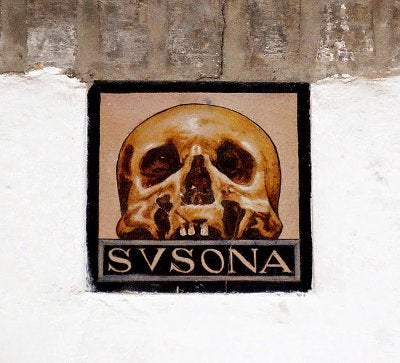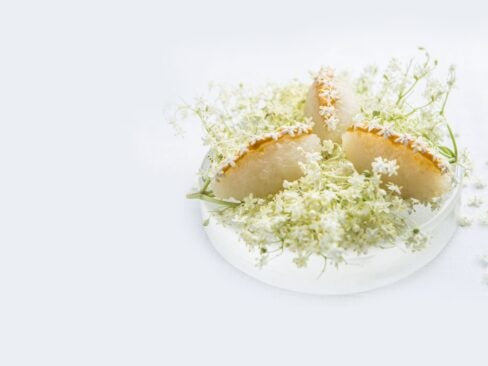In this latest article in Elite Traveler’s ongoing Spain series, we explore the must-see Jewish quarters dotted around its major cities.
The first signs of Jewish influence in Spain date back to the fourth century. Jewish communities thrived in Spain alongside Muslims and Christians for hundreds of years. But their presence ended definitively with the Alhambra Decree of 1492, which forced Jews to convert to Catholicism or face exile.
But over the course of millennia, the Jewish community left a lasting and spectacular legacy across Spain, much of which can still be seen today. The Jewish presence is still strong thanks to great synagogues and other historical architecture within Spain’s many Jewish quarters. Here, we take a look at some of the best Jewish quarters to visit in Spain.
Toledo

A skyline view of Toledo / ©Flickr – Arian Zwegers
Toledo was one of the most important Jewish cities in the whole of medieval Europe. Much of its Jewish quarter remains intact to this day. It is a labyrinth of narrow streets and two of its original synagogues still stand proudly (it is thought it once had as many as 10). The Sinagoga del Transito was constructed in 1366. Today, it is home to the Sephardic Museum which details how Toledo became one of the most important cities in Jewish culture. The other, Sinagoga of Santa María la Blanca, is 250 years older but was converted into a church in the early 15th century as the Jewish community came under pressure from the increasingly violent Catholic rule. Luckily, there were almost no alterations made to the original building during its conversion and retains many of its architectural nuances.
Córdoba

The Jewish quarter in Córdoba / ©Francisco Anzola
Córdoba’s Jewish quarter is the perfect example of how different cultures blended harmoniously together throughout the middle ages. During the 10th century, Córdoba is believed to be have been the center of Western society due to its unique mix of Muslim, Christian and Jewish cultures. Its synagogue, constructed in 1315, is one of few in Spain that still stands in its original form. The synagogue is distinctive due to its indoor-outdoor design, allowing natural light to flow in through the entrance hall from the charming courtyard. Córdoba’s historic center was declared a World Heritage Site by Unesco in 1994 and it is easy to see why. Walk along the Calle de los Judíos to find the statue dedicated to Maimónides, a great Jewish philosopher who hailed from the city. Visitors can also see the Zoco Municipal Market and a museum dedicated to bullfighting in this area.
Girona

A charming square in Girona’s Jewish quarter / ©Flcikr – Enric Rubio Ros
A popular day trip for people visiting Barcelona, Girona is a historical city full of architectural wonders. Its Jewish quarter, the ‘Call’, is one of the best-preserved in Europe. Jewish influence in Girona dates back to the ninth-century and parts of its last synagogue can still be explored. Visitors can marvel at preserved artifacts at the Centre Bonastruc ça Porta (Jewish Museum) which is located within the original quarter. Here, you can also retrace the steps of Talmudist Nachmanides, a Sephardic rabbi and philosopher who helped bring his religion back to prominence in Jerusalem in the 13th-century following its destruction by the Crusaders. Nachmanides, also known as Ramban, spent most of his life in Girona and is considered the most important Jewish figure in the region’s history.
Seville

The tile representing the skull of Susona
This beautiful city is a medieval masterpiece, so much so that it became a prominent filming location for Game of Thrones. Real Alcazár de Sevilla and the Giralda Bell Tower are must-see sites, but retracing the steps of its once-thriving Jewish community is arguably just as rewarding. The old Jewish quarter is located in the Santa Cruz area, where the quintessential narrow streets and beautiful plazas are very much alive today with many shops selling handcrafted goods and souvenirs to tourists.
Seville was the site of one of the most brutal aspects of the Spanish Inquisition, and its synagogues were torn down and replaced by grand cathedrals. Thousands of Jews are believed to have been killed. One of the area’s most famous attractions is a tile with a human skull on it. This tile is a haunting reminder of the animosity that once tore Christians and Jewish communities apart. It belonged to a Jewish woman, Susona, who fell in love with a Christian Knight. Unable to be together, Susona refused to renounce her love for the man and ultimately paid with her life. Her skull was placed on her window as a warning to those who might consider fraternizing with someone from another religion. The skull is long gone, but the tile is placed where her skull once sat and now acts as a dark reminder of just how brutal mankind can be.










